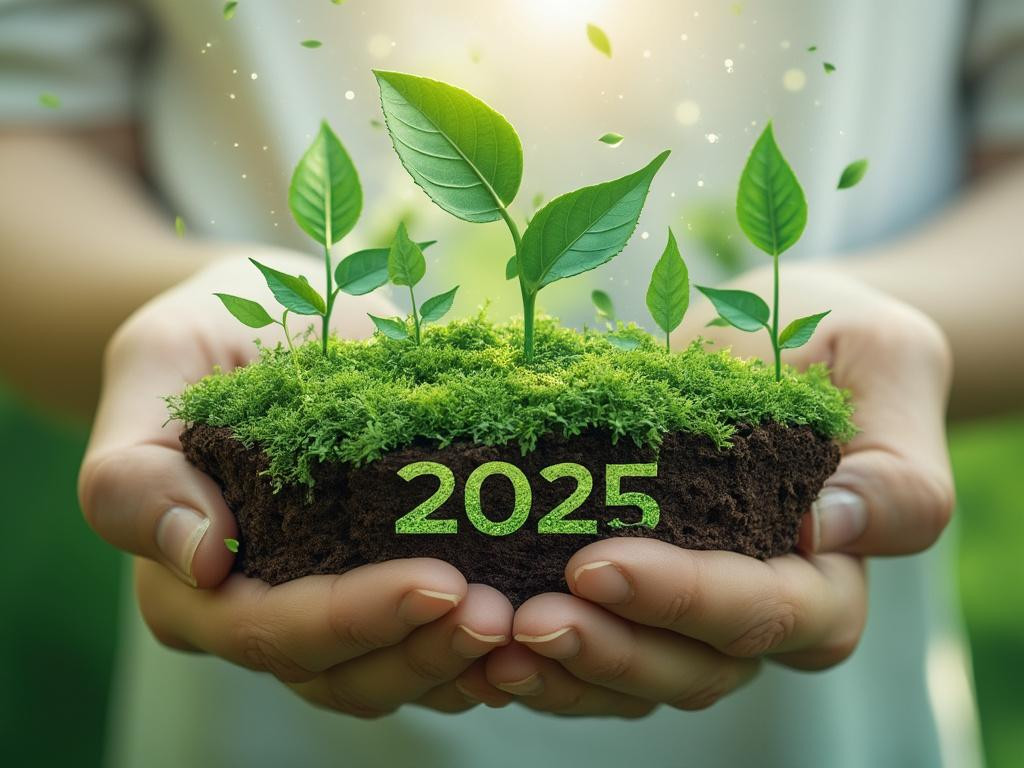In 2025, the global movement toward sustainable living has gained unprecedented momentum, driven by innovative practices and emerging trends that promise a greener future. From eco-friendly home designs to mindful consumption habits, individuals and communities are embracing changes that not only benefit the planet but also enhance quality of life.
1. The Rise of Tapestry Lawns: A Biodiverse Alternative
Traditional lawns are being replaced by tapestry lawns, a vibrant mix of low-growing plants such as wild grasses, herbs, and wildflowers. These lawns require less water, reduce maintenance, and support local pollinators, offering an eco-friendly and aesthetically pleasing alternative to conventional grass expanses. (realsimple.com)
2. Embracing Self-Sufficient Gardening
The concept of self-sufficient gardening has surged in popularity, encouraging individuals to grow their own produce year-round. This practice reduces reliance on commercial agriculture, lowers grocery bills, and promotes consumption of fresh, organic foods. Techniques include composting, seed saving, and companion planting, making it accessible even to those with limited space through container gardening. (thespruce.com)
3. Sustainable Home Design: Biophilic and Energy-Efficient
Homeowners are increasingly integrating biophilic design principles, which emphasize a connection to nature through natural light, ventilation, and the use of plants. Coupled with energy-efficient systems like solar panels and geothermal heating, these designs not only reduce environmental impact but also enhance mental and physical well-being. (timesunion.com)
4. The Shift to Plant-Based and Lab-Grown Diets
Dietary habits are evolving, with a significant shift toward plant-based and lab-grown foods. These alternatives reduce the carbon footprint associated with traditional meat production and offer health benefits. The mainstream acceptance of lab-grown meats provides sustainable protein sources, catering to the environmentally conscious consumer. (funded.com)
5. Circular Economy and Conscious Consumerism
The adoption of the circular economy model is transforming consumption patterns. Consumers are prioritizing products designed for longevity, reusability, and recyclability. This shift is evident in industries like fashion, where upcycled and sustainable materials are in demand, reflecting a broader trend of conscious consumerism. (neste.com)
6. Technological Advancements in Sustainable Living
Technological innovation plays a pivotal role in sustainable living. Smart home systems powered by AI and IoT optimize energy usage, while advancements in carbon capture and recycling technologies address environmental challenges. These developments make sustainable practices more efficient and accessible. (funded.com)
7. Regulatory Measures and Green Financing
Governments and financial institutions are implementing policies to promote sustainability. Enhanced regulatory frameworks combat greenwashing, ensuring corporate accountability. Green financing options, such as loans for eco-friendly home upgrades, incentivize individuals to adopt sustainable practices, making it financially viable to go green. (impact.economist.com)
8. Community Engagement and Local Initiatives
Grassroots movements and local initiatives are at the forefront of the sustainability revolution. Community gardens, local sustainability workshops, and eco-friendly public projects empower individuals to participate actively in environmental stewardship, fostering a collective commitment to sustainable living.
Embracing these trends not only contributes to environmental preservation but also enhances personal well-being and community resilience. By integrating these practices into daily life, individuals can be part of a transformative movement toward a sustainable and fulfilling future.
